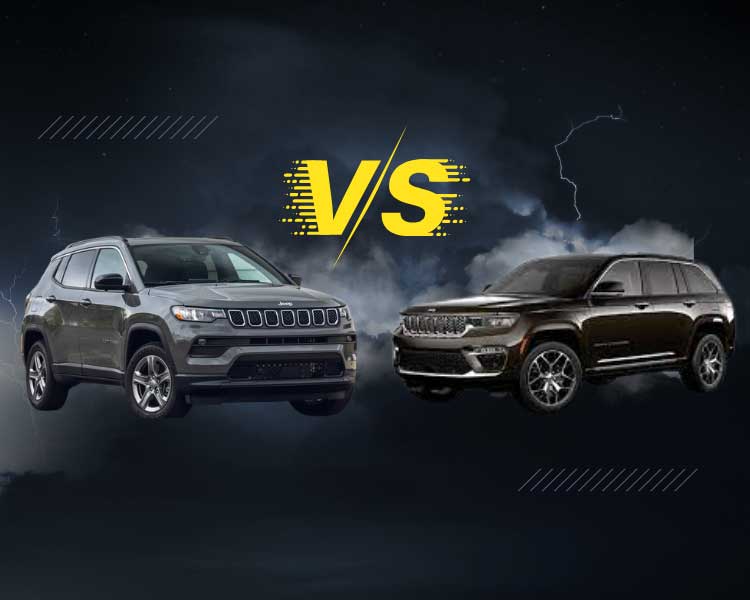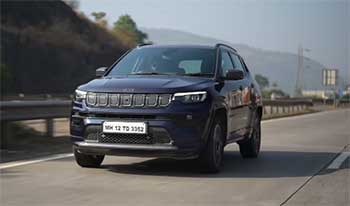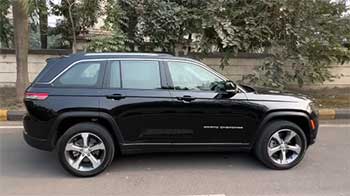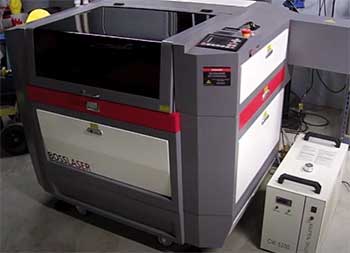As I set out to choose between the 2025 Jeep Compass and Jeep Grand Cherokee, I wanted a vehicle that matched my lifestyle—whether it’s navigating city streets or tackling weekend adventures. Both SUVs embody Jeep’s rugged spirit, but they cater to different needs.
In this article, I’ll share my firsthand comparison, weighing their pros and cons, key features, and performance to help you decide which Jeep suits your journey. From size to tech, I’ve explored every angle to uncover what makes each model shine.

Comparison Table: Jeep Compass vs. Jeep Grand Cherokee
| Feature | Jeep Compass (Sport Trim) | Jeep Grand Cherokee (Laredo Trim) |
| Starting MSRP | $28,895 | $38,490 |
| Engine | 2.0L Turbo 4-Cylinder (200 hp, 221 lb-ft) | 3.6L V6 (293 hp, 260 lb-ft) |
| Transmission | 8-speed automatic | 8-speed automatic |
| Drivetrain | Standard AWD | Standard RWD, AWD available |
| Fuel Economy (MPG) | 24 city / 32 hwy / 27 combined | 19 city / 26 hwy / 22 combined |
| Passenger Volume | 100 cu. ft. | 145 cu. ft. (approx.) |
| Cargo Volume (Max) | 59.8 cu. ft. | 70.8 cu. ft. |
| Towing Capacity | 2,000 lbs. | 6,200 lbs. |
| Infotainment | 10.1-inch Uconnect 5 touchscreen | 8.4-inch Uconnect 5 touchscreen |
| Seating | 5 passengers | 5 or 7 (Grand Cherokee L) |
| Wheelbase | 103.8 in. | 116.7 in. |
| Length | 173.4 in. | 193.5 in. |
| Ground Clearance | 8.1 in. (Trailhawk: 8.6 in.) | 8.4 in. (Trailhawk: 10.9 in.) |
My Quest for the Right Jeep
I’ve always been drawn to Jeep’s iconic blend of rugged capability and modern comfort. With my old sedan struggling to keep up with my weekend hikes and city commutes, I decided it was time for an upgrade. The Jeep Compass and Grand Cherokee caught my eye, but choosing between them wasn’t straightforward. The Compass promised affordability and nimble handling, while the Grand Cherokee boasted power and luxury. To make an informed decision, I test-drove both, pored over specs, and considered how each would fit into my life. Here’s what I found.
Size and Space: Compact vs. Commanding
The first thing I noticed was the size difference. The Compass, a compact SUV, measures 173.4 inches long with a 103.8-inch wheelbase, making it a breeze to park in tight city spaces.1 Its 100 cubic feet of passenger volume comfortably seats five, but it feels snug for taller passengers in the back. Folding the rear seats, I got 59.8 cubic feet of cargo space—plenty for groceries or camping gear but not ideal for bulky items like a mountain bike without some Tetris-like packing.
The Grand Cherokee, a midsize SUV, is noticeably larger at 193.5 inches long with a 116.7-inch wheelbase.2 Its 145 cubic feet of passenger volume feels palatial, especially for rear passengers who get generous legroom. With 70.8 cubic feet of cargo space (rear seats folded), it easily swallowed my hiking gear, a cooler, and even a spare tire for off-road trips. The Grand Cherokee L variant, with three rows, is a game-changer for families, seating up to seven.3 For me, a solo adventurer with occasional passengers, the Compass’s size felt more manageable, but the Grand Cherokee’s spaciousness was tempting for road trips.
Pros of Compass Size:
- Easier to maneuver in urban settings.
- Fits in tight parking spots.
- Adequate cargo for small families or solo travelers.
Cons of Compass Size:
- Cramped rear seating for taller adults.
- Limited cargo space for large items.
Pros of Grand Cherokee Size:
- Roomy interior, ideal for families or groups.
- Larger cargo area for gear-heavy trips.
- Optional three-row seating (Grand Cherokee L).
Cons of Grand Cherokee Size:
- Harder to park in crowded areas.
- Bulkier feel on narrow trails.
Performance: Power Meets Efficiency
Under the hood, the 2025 Compass sports a 2.0-liter turbocharged four-cylinder engine, delivering 200 horsepower and 221 pound-feet of torque.4 Paired with an eight-speed automatic and standard all-wheel drive, it felt peppy during my city test drive, zipping through traffic with ease. On the highway, it held its own, though it lacked the punch for quick overtaking.
Its EPA-estimated 24/32/27 MPG (city/highway/combined) was a big plus for my budget, especially with gas prices fluctuating. Off-road, the Trailhawk trim’s 8.6-inch ground clearance and Selec-Terrain system handled muddy trails confidently, though it’s not a Wrangler-level beast.5
The Grand Cherokee’s 3.6-liter V6, pumping out 293 horsepower and 260 pound-feet of torque, was a different animal. Its eight-speed automatic and available four-wheel drive made it feel authoritative, whether merging onto highways or climbing rocky paths.
The Trailhawk’s 10.9-inch ground clearance and adaptive air suspension tackled rough terrain with ease, and its 6,200-pound towing capacity dwarfed the Compass’s 2,000 pounds—perfect for hauling a small trailer. However, its 19/26/22 MPG rating stung at the pump, and the hybrid 4xe option, while efficient (23/24 MPG), bumped the price significantly.
Pros of Compass Performance:
- Fuel-efficient for daily commutes.
- Nimble handling in urban environments.
- Solid off-road capability for a compact SUV.
Cons of Compass Performance:
- Underpowered for aggressive driving.
- Limited towing capacity.
Pros of Grand Cherokee Performance:
- Powerful V6 for confident acceleration.
- Superior off-road prowess (especially Trailhawk).
- High towing capacity for trailers or boats.
Cons of Grand Cherokee Performance:
- Lower fuel economy.
- Higher fuel costs for daily driving.
Technology and Features: Modern Meets Premium
Inside, both Jeeps impressed with their tech, but the Compass surprised me with its value. The base Sport trim comes with a 10.1-inch Uconnect 5 touchscreen, wireless Apple CarPlay, and Android Auto—seamless for streaming my playlists.6 Higher trims add a 10.25-inch digital gauge cluster and features like wireless charging and a hands-free liftgate.7 Safety-wise, it offers forward collision warning, active lane management, and drowsy driver detection, which gave me peace of mind on long drives. The interior, with its textured fabric dash and leather-wrapped steering wheel, felt upscale for the price.
The Grand Cherokee, however, leaned into luxury. Its 8.4-inch Uconnect 5 touchscreen (upgradable to 10.1 inches) was crisp, and premium trims offered a 19-speaker McIntosh sound system that made my music sound concert-worthy. Features like a surround-view camera, memory seats, and adaptive cruise control with stop-and-go felt indulgent.
The Grand Cherokee L’s rear-seat entertainment system was a hit with my friend’s kids during a test drive. Safety features matched the Compass but added night vision on top trims—a cool perk for rural drives. The cabin’s leather upholstery and wood trim screamed premium, but the base Laredo still felt refined.
Pros of Compass Tech:
- Large standard touchscreen for the price.
- Comprehensive safety features.
- User-friendly Uconnect system.
Cons of Compass Tech:
- Fewer premium options than Grand Cherokee.
- Smaller digital cluster on base trims.
Pros of Grand Cherokee Tech:
- Luxurious options like McIntosh audio and night vision.
- Advanced driver assistance features.
- Spacious, upscale interior.
Cons of Grand Cherokee Tech:
- Smaller base touchscreen.
- Premium features increase cost significantly.
Off-Road Capability: Jeep’s True DNA

Jeep’s off-road legacy was a big draw for me, and both SUVs delivered, though in different ways.
The Compass Trailhawk, with its 20:1 crawl ratio, skid plates, and all-terrain tires, handled muddy trails and rocky paths during my weekend test.8 The Selec-Terrain system let me switch between Auto, Snow, Sand, Mud, and Rock modes, making it versatile for moderate adventures.
It’s not built for extreme rock crawling, but it tackled my local trails with confidence.
The Grand Cherokee Trailhawk took it up a notch. Its Quadra-Drive II 4×4 system, electronic limited-slip differential, and sway bar disconnect made it feel unstoppable on rugged terrain. During my test, it climbed steep inclines and forded shallow streams without breaking a sweat.
The 4xe hybrid’s electric torque added an extra layer of control off-road. For serious overlanding, the Grand Cherokee is the clear winner, but the Compass held its own for casual adventures.
Pros of Compass Off-Road:
- Trailhawk trim is capable for light off-roading.
- Standard AWD across all trims.
- Agile on narrow trails.
Cons of Compass Off-Road:
- Not suited for extreme off-road conditions.
- Lower ground clearance than Grand Cherokee.
Pros of Grand Cherokee Off-Road:
- Best-in-class off-road features (Trailhawk, 4xe).
- Higher ground clearance and advanced 4×4 systems.
- Ideal for serious adventurers.
Cons of Grand Cherokee Off-Road:
- Overkill for casual off-roaders.
- Premium off-road trims are pricey.
Price and Value: Budget vs. Luxury
Price was a major factor for me. The 2025 Compass Sport starts at $28,895, a steal for a Jeep with standard AWD and modern tech. Even the loaded Trailhawk, at around $32,990, felt like a bargain for its off-road chops. Annual repair costs average $525, and its fuel efficiency kept my wallet happy. However, the 2018 model’s oil consumption issues gave me pause, though newer models seem reliable (J.D. Power: 81/100 for Quality & Reliability for 2025 Compass).

The Grand Cherokee Laredo starts at $38,490, and premium trims like the Summit Reserve 4xe can exceed $60,000. Its $650 annual repair costs and lower MPG made it a pricier commitment.
Still, its luxury features and J.D. Power score (estimated to be in the “Average” range, similar to previous years’ data) justified the cost for those seeking a premium ride.
For me, the Compass offered better value, but the Grand Cherokee’s refinement was hard to ignore.
Pros of Compass Price:
- Affordable starting price.
- Lower ownership costs.
- Great value for features.
Cons of Compass Price:
- Fewer luxury options.
- Past reliability concerns (pre-2019 models).
Pros of Grand Cherokee Price:
- Premium features justify higher cost.
- Strong resale value.
- Hybrid option for efficiency.
Cons of Grand Cherokee Price:
- Higher starting MSRP.
- More expensive to maintain and fuel.
Driving Experience: City to Wilderness
Driving the Compass felt light and responsive in the city. Its tight turning radius (18.1 feet) made parallel parking a breeze, and the turbo engine was zippy enough for daily commutes. On the highway, it was stable but lacked the power for quick merges. Off-road, it handled moderate trails well, but I felt its limits on steeper inclines.
The Grand Cherokee felt commanding. Its V6 delivered smooth, confident acceleration, and the adaptive suspension soaked up bumps on both pavement and dirt. The larger size made city parking trickier (18.8-foot turning radius), but it shone on highways and rugged trails. The cabin was quieter, too, making long drives more enjoyable.
Pros of Compass Driving:
- Agile and easy to handle in cities.
- Smooth ride for a compact SUV.
- Fuel-efficient for daily use.
Cons of Compass Driving:
- Less power for highway passing.
- Bouncier ride on rough roads.
Pros of Grand Cherokee Driving:
- Powerful, smooth performance.
- Comfortable on long drives.
- Exceptional off-road handling.
Cons of Grand Cherokee Driving:
- Bulkier in tight spaces.
- Less fuel-efficient.
My Verdict: Which Jeep Fits Your Life?
After test-driving both, I leaned toward the Compass for its affordability and city-friendly size. It’s perfect for solo drivers or small families who want Jeep’s rugged charm without breaking the bank. The Grand Cherokee, with its power, space, and luxury, suits families or adventure enthusiasts who need more capability and don’t mind the higher cost.
Your choice depends on your priorities—budget and efficiency or power and premium features. Test-drive both to feel the difference and find your perfect Jeep.
Compare Related Vehicles: Mercedes GLC 300 vs. Audi Q5
Frequently Asked Questions (FAQ)
Yes, the Grand Cherokee is larger, measuring 193.5 inches long with 145 cu. ft. of passenger volume (approx.), compared to the Compass’s 173.4 inches and 100 cu. ft.9
The Compass offers better fuel economy and cargo space, while the Cherokee (discontinued in 2023) has more power and towing capacity. Choose based on efficiency vs. performance needs.
The Jeep Compass is not being discontinued; the 2025 model is available with updated features. The Cherokee was discontinued in 2023.
The Compass is good for budget-conscious buyers seeking a compact, capable SUV with modern tech. It’s less ideal for those needing power or luxury.
Conclusion
You’re now equipped to decide between the Jeep Compass and Jeep Grand Cherokee. If you crave luxury and don’t mind the higher price, the QX60’s upscale interior and towing prowess might win you over.
But if you value reliability, affordability, and extra cargo space, the Highlander is tough to beat. I’d love to hear what you prioritize in an SUV—let me know what sways your decision!

